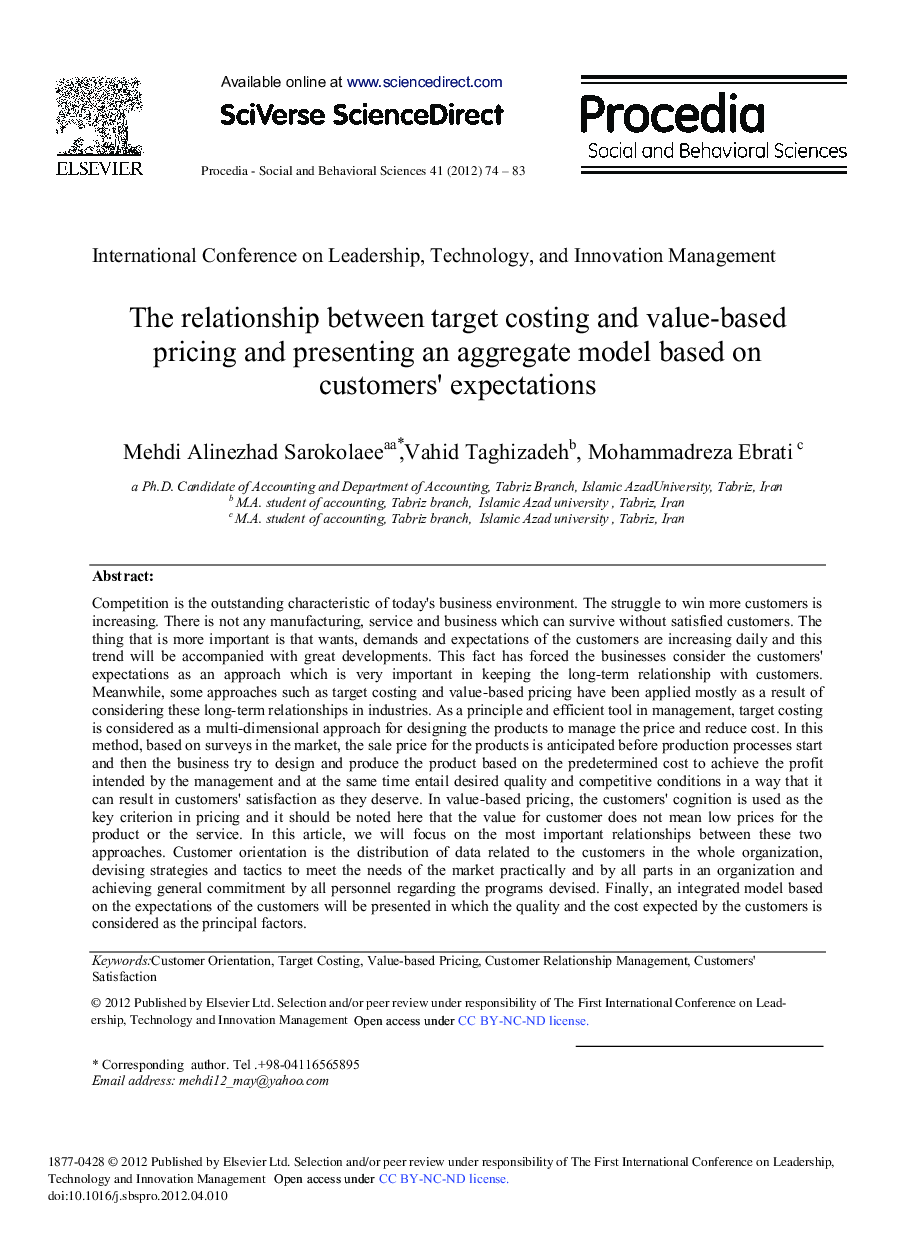| کد مقاله | کد نشریه | سال انتشار | مقاله انگلیسی | نسخه تمام متن |
|---|---|---|---|---|
| 1122454 | 1488518 | 2012 | 10 صفحه PDF | دانلود رایگان |

Competition is the outstanding characteristic of today's business environment. The struggle to win more customers is increasing. There is not any manufacturing, service and business which can survive without satisfied customers. The thing that is more important is that wants, demands and expectations of the customers are increasing daily and this trend will be accompanied with great developments. This fact has forced the businesses consider the customers’ expectations as an approach which is very important in keeping the long-term relationship with customers. Meanwhile, some approaches such as target costing and value-based pricing have been applied mostly as a result of considering these long-term relationships in industries. As a principle and efficient tool in management, target costing is considered as a multi-dimensional approach for designing the products to manage the price and reduce cost. In this method, based on surveys in the market, the sale price for the products is anticipated before production processes start and then the business try to design and produce the product based on the predetermined cost to achieve the profit intended by the management and at the same time entail desired quality and competitive conditions in a way that it can result in customers’ satisfaction as they deserve. In value-based pricing, the customers’ cognition is used as the key criterion in pricing and it should be noted here that the value for customer does not mean low prices for the product or the service. In this article, we will focus on the most important relationships between these two approaches. Customer orientation is the distribution of data related to the customers in the whole organization, devising strategies and tactics to meet the needs of the market practically and by all parts in an organization and achieving general commitment by all personnel regarding the programs devised. Finally, an integrated model based on the expectations of the customers will be presented in which the quality and the cost expected by the customers is considered as the principal factors.
Journal: Procedia - Social and Behavioral Sciences - Volume 41, 2012, Pages 74-83